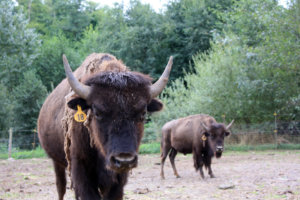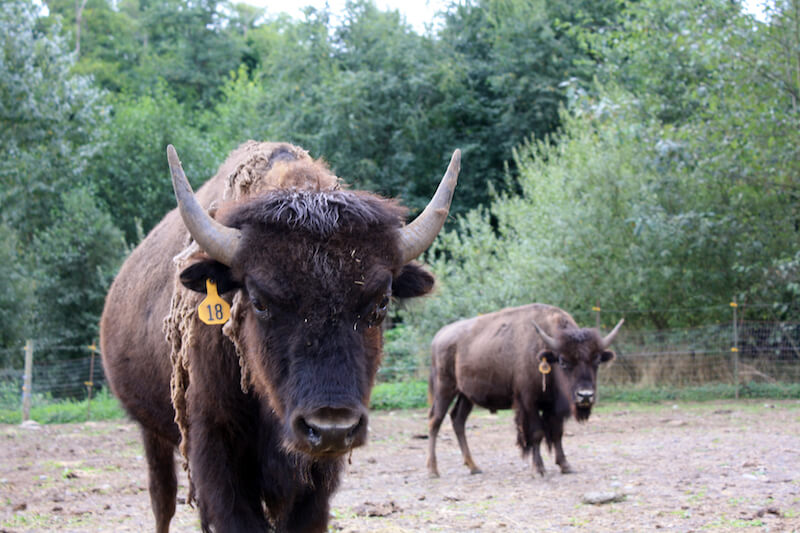There’s More Than One Way to School a Cowhorse
By Allison Trimble

Training cowhorses and cutters in the Pacific Northwest can be challenging simply due to the shortage and expense of fresh cattle. Mechanical devices, such as a pro cutter, can be helpful training tools, but you can’t replace the need for your horse to read and work a live animal. Over the years it has become common to use buffalo in the place of cattle. I personally have used buffalo over the years with mostly positive experiences.
The most beneficial reason to use buffalo in your program is that they don’t sour like cattle. Unlike cattle, buffalo become patterned to a routine with your horses. Buffalo are extremely fast and do not take well to a lot of pressure initially. It is important to either purchase already trained buffalo, or take your time training them with an experienced horse in a low pressure situation. You want the buffalo to learn to stop and turn towards you so that they better mimic the movement of a cow. If they are pressured too fast, they will run and turn quickly, away from you and that will not help your horses. Once trained, you will find that each individual buffalo will have a pattern or way of working that is slightly different from another. This is nice because you can match the personality of the buffalo to the needs of the horse you are working.
Buffalo do not tire in a session as quickly as cattle do. You can work your horse longer on a specific training need than if you were working a cow. Many people will use their buffalo in a herd with cattle. You can walk into the herd, and push out the buffalo and work them instead of souring your cattle by over using them.
In cowhorse training, certain buffalo will allow you to rate them around the pen. Because of their horns and quickness, you are not able to get as close to them as you can a cow, and they can be too fast for a lot of horses. I have had a couple of buffalo over the years that worked well to take down the fence, but not all buffalo will take that pressure. Training on a buffalo that is too fast or rank down the fence can cause your horse to be strong coming out of the corner, or can make them lose confidence in their ability to get into position. I try to use discretion when I am training on buffalo this way and keep it to just rating and stopping.
The ideal buffalo will be eight months to about two years old. Most people prefer heifers, but bull calves will work. I have had good and bad luck with bull calves. I had two cows for nearly six years that I worked even at their mature size. Right now, I have two really nice bull calves, but I had six a few years ago that weren’t as good. One of the six bulls was aggressive and charged and made the entire bunch rank and dangerous for the horses. Buffalo are rumored to be hard on fences, but that has not been my experience. I use field fence and hot wire and they never try to test the fence unless pressured. If you pressure a buffalo, they will take down anything in their way. If allowed to think and move unpressured, I think they are easier than cattle.
Buffalo used to be very inexpensive, which made them even more attractive. Now with the shortage of cattle and hay, they are very alluring, but their price has nearly tripled in the last year. You could find weanlings for $250 to $500 five years ago, while now it is hard to find buffalo for less than $1500 a piece if you can even find them. This largely has to do with the high price and popularity of buffalo meat. There are outfits that offer trained buffalo that you purchase once, at a higher price, and then trade in as they age for new, younger stock. However, if you weigh out the decreased cost in feed compared to cattle, and the longevity of an individual animal, you will find that buffalo work out to be dramatically less expensive in the long run. Personally, I enjoy having them as much to look at standing in my field as I do for the benefits they offer my training program.
Published October 2011 Issue

Allison Trimble is a Realtor® specializing in equestrian properties, farm and ranch properties, and residential real estate. As a former horse trainer, and a current owner, breeder and non-pro competitor in cow horse and reining events, she combines her experience in the horse industry with her lifelong real estate expertise to guide her clients through the real estate process.
Learn more at www.coastalrealtywa.com






